Video Rewind is BTS stories of video store era favorites, one rental at a time! Press play and adjust your tracking for 1995’s “Fair Game”.
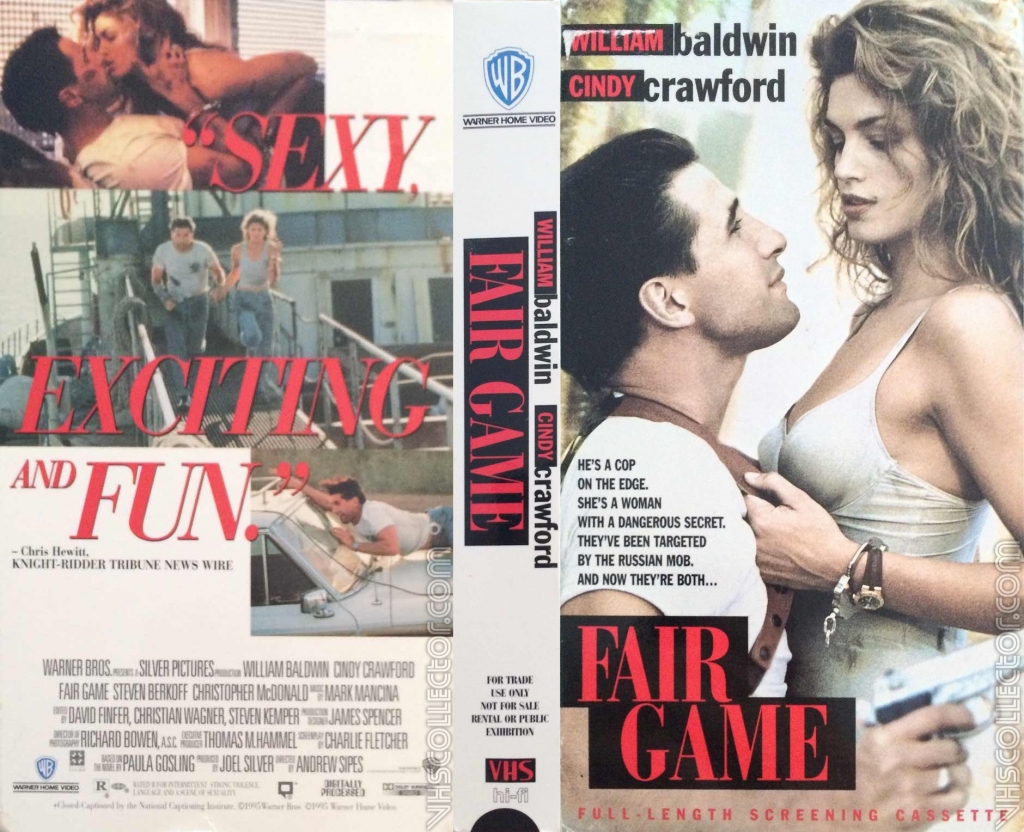
Leading fashion magazines Glamour and Vogue, along with prominent newspapers such as the New York Times and the Washington Post, began to use the term “supermodel” in the 1960s.
Popular models Twiggy, Cheryl Tiegs, and Jean Shrimpton were all honored with the supermodel title, reaching the peak of the profession. By the 1980s, models such as Elle Macpherson, Gia Carangi, and Brooke Shields began to endorse products and gain major recognition, appearing in nationwide commercials (look up the legendary Brooke Shields Calvin Klein jeans commercial).
With this exposure and recognition, models entered a new level of notoriety within popular culture, and “supermodel” left the confines of the printed pages of fashion publications and entered the mainstream lexicon.
The now-iconic January 1990 British Vogue cover officially ushered in the era of the supermodel asking, “The 1990s. What Next?” The answer was the image on the cover that featured five supermodels, including Naomi Campbell and Christy Turlington.
But one supermodel on that cover would take the ’90s by storm and rise to the level of a worldwide phenomenon, a woman whose name would become synonymous with the term supermodel: Cindy Crawford.
The evolution of the model to supermodel, and from fashion to product endorsement, naturally led to the entertainment industry’s desire to get in (and cash in) on the growing popularity of the mainstream model. The five supermodels on the British Vogue cover would all appear in George Micheal’s “Freedom ’90” music video (directed by future Fight Club director David Fincher), further entrenching the supermodel into popular culture.
Models such as Jessica Lange, Kim Basinger, Rene Russo, and Andie MacDowell had all experienced major success in Hollywood by the mid-1990s. But aside from Kathy Ireland starring in National Lampoon’s Loaded Weapon 1, the supermodel had yet to make an impact on Tinseltown.
Studios had their eyes set on the biggest supermodel on the planet. who had yet to appear in a motion picture. That was about to change.
In June of 1993, Variety reported that Sylvester Stallone signed on to star in Fair Game, described as “a romantic actioner budgeted around $30 million.”
The film, set for a summer 1994 release, was adapted from Paula Gosling’s novel and to be produced by mega-producer Joel Silver (Lethal Weapon, Die Hard). Silver was looking to capitalize on the kind of “tough-skinned romantic chemistry” shared between Mel Gibson and Rene Russo in Lethal Weapon 3.
Silver explained the story this way:
“Sly is a Miami cop who teams up with a female management consultant. They really don’t like each other in the beginning, but then they solve the crime and really like each other by the end. It’s the kind of male/female buddy picture I haven’t made yet.”
Interestingly, Stallone had previously made Cobra, a 1986 film that was also adapted from Paula Gosling’s novel. Fair Game, although heavy on the action, seemed to be approaching the material from a more romantically playful angle.
With one of the biggest action stars in Hollywood history set to star, the search was on for a female lead to play opposite Stallone.
Julianne Moore, who appeared in the hit 1992 thriller The Hand That Rocks the Cradle during the summer of 1993 was enjoying the success of the massively popular The Fugitive opposite Harrison Ford. Looking to ride her hot streak, Moore was considered for the lead female role of Kate McQuean in Fair Game.
Perhaps looking for a more established box office star, the producers then looked to Academy Award winner Geena Davis. When Davis turned down the role, Brooke Shields and Drew Barrymore were offered the part, but both turned it down.
Unable to secure a female lead, a 1994 release date for Fair Game was quickly being pushed, and instead, a date in 1995 seemed more likely. As time passed, the busy Stallone left the picture to shoot the similarly themed The Specialist opposite one of the hottest actresses in Hollywood, former model Sharon Stone.
Fair Game now had two vacant lead roles to fill.
With Stallone’s departure, Keanu Reeves was offered the role but turned it down. With principal photography officially on hold, producer Joel Silver had an idea to reignite production.
“I never wanted to be an actress,” said Cindy Crawford, “but I was friends with [Joel Silver] and he decided he wanted me to do this movie.”
Crawford turned down Silver many times before agreeing to make Fair Game her feature film debut.
“I kept saying, ‘No, no, no,’ and he kept saying, ‘How much more money,’” explains Crawford. “And at a certain point, I was like, I’m an idiot if I don’t do it.”
Before Fair Game, Crawford turned down a number of roles where she would portray a model, a role obviously deep in her comfort zone. But Crawford liked the idea of playing a lawyer in Fair Game. At 28, the supermodel realized she was not only old enough to portray a lawyer but had the smarts to do so as well. “I was valedictorian of my high school and I’m definitely smart enough to be a lawyer.”
Joel Silver saw the enthusiasm that Crawford had for the role saying, “She liked what the character was about, who the character was.”
Not only did Crawford believe she could play a convincing lawyer, but she also, at almost 30, thought the time was right to take on a new challenge.
With Crawford officially signed on to star, publicity for Fair Game exploded.
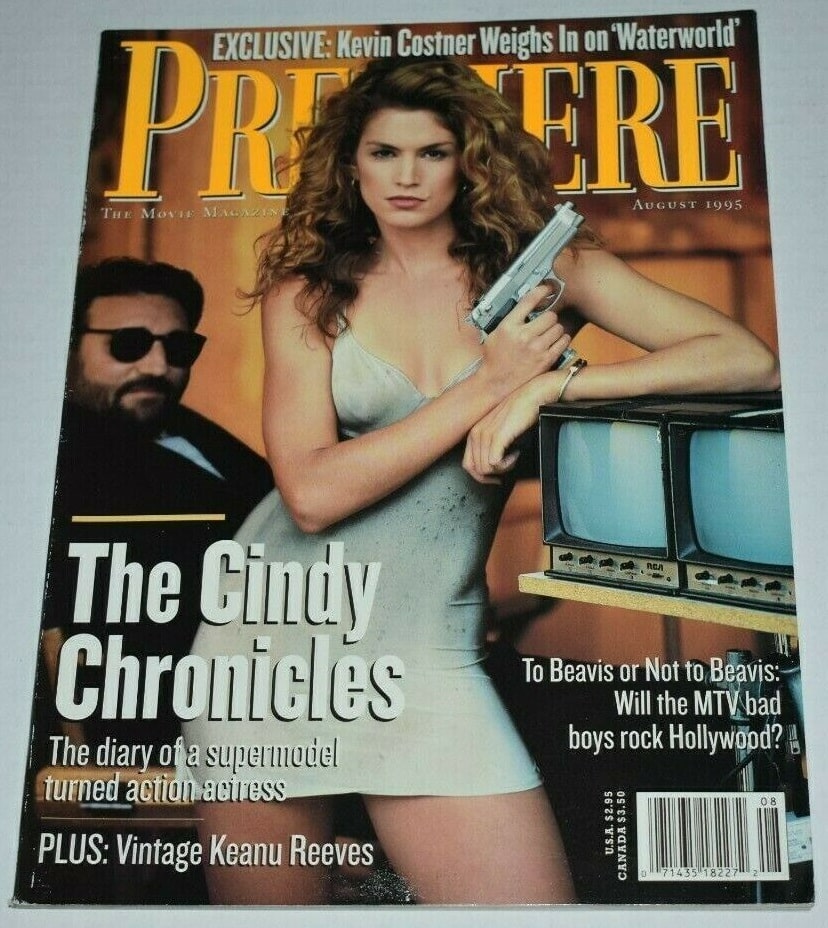
The search for a male lead became a lot easier with her involvement, and the production set its sights on rising star William Baldwin.
Starring in box office hits Flatliners and Backdraft, Baldwin was enjoying a wave of success in the early 1990s. And although his voyeuristic thriller Sliver failed to perform in 1993, its steamy love scenes with Sharon Stone kept the actor in the spotlight.
What attracted Baldwin to Fair Game was he had never done an action movie before. He thought if he was going to do an action movie, who better to do it with than action super-producer Joel Silver, who Baldwin referred to as “the Godfather of action movies” in the 1990s.
However, “The major selling point was Cindy [Crawford],” said Baldwin in 1995.
The two had been friends for 10 years when Fair Game began filming, having met in New York City when Baldwin also did a little modeling to pay the bills.
“I did a catalog for some department store with Cindy, so I knew her before,” recalled Baldwin.
The actor knew there would be a lot of “awareness and curiosity” surrounding Crawford’s big-screen debut, and ultimately, Baldwin thought a big action movie starring himself and Crawford would be a fun project to be a part of.
Put simply, Baldwin summed up his interest in Fair Game this way:
“I guess the answer to every question would just be ‘Cindy’.”
Filming began in February of 1995 in various locations around Florida, including Fort Lauderdale, Miami Beach, and the Florida Keys.
Fair Game tells the story of Kate McQuean (Crawford), a lawyer who attempts to seize a large boat as part of a divorce proceeding.
What seems like a small-time case becomes deadly when the boat in question is actually the headquarters of a former KGB agent who is now involved in international money laundering. When the rogue group of KGB criminals finds out they are about to be discovered by the authorities, they target McQuean to be killed. When they botch the attempt, she is reluctantly taken into custody by Max Kirkpatrick (Baldwin), a Miami cop who protects her while the two are on the run.
The setup might be a bit goofy (and the script that follows isn’t much better), but Fair Game delivers on two things: sex appeal and action.
Baldwin felt protective over his co-star, striving to make Crawford feel safe and confident during filming.
“The more safe the environment was for her the more willing she’d be to take risks in her performance,” said Baldwin. “I just assumed that would be what’s best for the picture.”
Instead of making too many unwanted suggestions to Crawford, Baldwin mostly waited for her to come to him if she needed any help with anything, an approach Crawford greatly appreciated.
“He’s really supportive, he doesn’t have an attitude,” said Crawford, adding that Baldwin never condescended or talked down to her on set.
Crawford began preparing physically for the role four months prior to filming.
“Joel [Silver] wanted me to be ripped like Linda Hamilton in Terminator,” said Crawford, but she didn’t think that was the right look for her. Being “strong, fast, and coordinated” were important to Crawford because of all the stunt work and physicality the role demanded.
Crawford’s trainer was Lindsey Read, who said her biggest challenge with the supermodel was “making her do legs,” exercises Crawford apparently didn’t enjoy.
“Action movies: never again,” Crawford joked with a laugh while working out during filming. “But you got to do it, there’s no other way of getting it other than doing the work,” Crawford said, happy about seeing muscle definition in scenes and stills during filming. “It’s part of the job.”
And like every other endeavor she took on in her life, Crawford approached principal photography with ambitious determination.
With it being her first film, Crawford admits she was scared during filming. She timidly told the producer and director, Andrew Sipes, at the start, “Ok, I’m here guys. I’ll do the best I can.”
But Crawford took on the action in Fair Game like a seasoned pro, running through flames covered in flame-retardant gel and being peppered with hot shells from gunfire (one of which bounced off the floor and found its way up her skirt).
The filmmakers were very impressed with what Crawford was willing to do, going above and beyond what is expected from a Hollywood actress.
Crawford embraced the physicality as well as the dangerous aspects of the role, saying it helped her “find the character more and be more in the situation.”
“She did virtually everything, except that scene where she was blown off the balcony,” said Baldwin.
In the scene, where Crawford jumps onto a moving train, she was supposed to run to the ladder on the side of the train car and the then “cut” would be called. Instead, Crawford not only ran along the train to the ladder but jumped onto it herself, leaving her stunt double with nothing to do.
Crawford found the stunt work “fun,” saying that learning how to punch and fire a gun (which she’d never done before) was “like being a kid playing at recess.”
The only time Crawford felt scared during the stunt work was when she was a passenger in a car. The stuntman was driving and the car almost spun out, a moment that shook up Crawford because, in a telling statement, she “doesn’t like not being in control.”
Although she had fun doing so, Crawford did accumulate several bumps and bruises during filming.
“It’s a lot of stress,” said Baldwin of the dangerous stunt work and explosion scenes that involved fire and severe heat. “It’s always in the back of your mind that something can go wrong, someone can get hurt.” Baldwin also said that filming such action working 15 hour days was exhausting.
What amounts to a few minutes of action-packed screen time can sometimes take a week or two to shoot. Among the numerous quick takes, while stitching together an action sequence, Baldwin said that what’s most difficult is keeping up the intensity of the scene in such short bursts. The ability to create an arc with that intensity was a challenge for Baldwin. “That’s something I learned a lot about on this film.”
But regarding the kind of action that Joel Silver demanded, Baldwin said, “Joel’s completely out of his mind, but listen, I mean that in the best possible way.”
Being a Joel Silver production, Fair Game is loaded with ridiculous action.
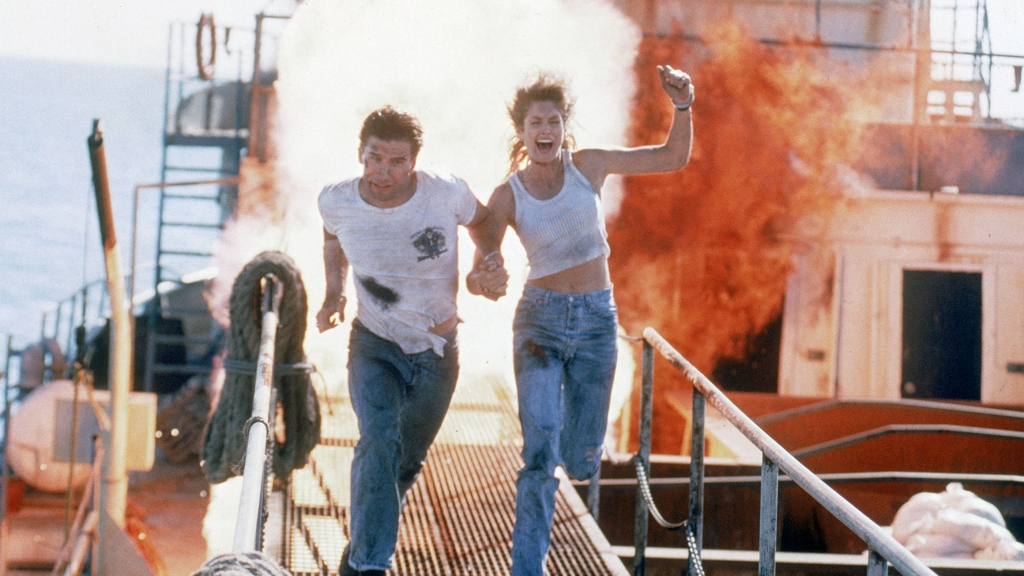
When Kate’s home explodes in an attempt on her life (botch number two by the former KGB agents), she flies like a ragdoll off the top railing, flailing and flipping while falling into water below (this is the one stunt Crawford did not do, and for good reason). In the same scene, Baldwin fires repeatedly at the truck full of bad guys while simultaneously side-leaping into the same water.
It’s a slow-motion, cartoonish presentation that makes the film play out like a tough-guy comic book full of familiar characters.
The cartoon qualities continue with outrageously detailed tracking gadgets (James Bond would want these) that allow the bad guys to know exactly where Kate and Max are at all times. And because the bad guys always know where they are, the action never lets up.
With all of the focus on the action, the script doesn’t provide the characters much to work with, and the dialogue at times is just plain laughable.
“I did everything I was supposed to do,” says Kirkpatrick when he thinks the FBI arrives to help him, only to find out they are the bad guys. “I checked their ID. These guys are perfect.”
The dialogue and (lack of) thinking by the characters is as goofy as the action is cartoonish. And in a way thank the movie gods for that, because if either was any less ridiculous than the other Fair Game would be in danger of trying to take itself too seriously.
Between the goofy dialogue and (limited) playful bickering between Crawford and Baldwin (more on that later), a big smile remains on the viewer’s face between the action.
Of course, with stars like Baldwin and especially Crawford, along with all the action is a little action.

The mood is set from the opening moments of the film as Crawford jogs along the beach as the opening credits play, her figure on display in silhouette as the sun rises behind her. Playing over the scene is a subtle blend of sexy intrigue with a pinch of danger, music that foreshadows the events that will take place in the very near future.
Just like Baldwin’s scenes with Sharon Stone in 1993’s Sliver caused a stir, the fact that Cindy Crawford would be involved in a love scene on the big screen caused a sensation in the trades.
“Love scenes are so hard because they’re so choreographed,” said Crawford, “but that wasn’t true at all in my experience.”
“I was more nervous,” said first-time director Andrew Sipes. “I was behind the camera breaking out in a sweat, she [Crawford] was fine.”
For the steamy love scene that takes place on a speeding train, Baldwin and Crawford were allowed to explore and take their time with foreplay. This loose, almost ad-lib approach did away with blocking and lighting setups, so the actors didn’t have to worry about hitting a mark or blocking each others light. “Technical shit,” as Baldwin put it.
With Crawford at the height of her supermodel mega-stardom, the scenes are as thrilling as any action sequence the film has to offer, before being interrupted by an evil henchman (Jason Voorhees himself, Kane Hodder).
“They let us do whatever we wanted,” said Baldwin. He went on to explain the nature of the scene this way: “This is more, you know, when you’re on your knees in front of a woman and you pull her jeans down and expose her hip bone and you start kissing her there or you press your face into her stomach. I think that is so fucking sexy.”
Director Andrew Sipes admitted that the scene took longer to properly film than originally planned, knowing the sex had to be just as explosive as the action.
“We went into a moving train car to film a love scene for one night,” he said, “and we did not leave for three nights.”
Baldwin said it was the best love scene he’d ever been a part of, and producer Joel Silver summed it up by laughing and saying, “you just have to see the scene.”
It wasn’t long after principal photography wrapped at the end of May that it was apparent that re-shoots would be necessary.
These re-shoots would push back the planned August release date to October, and rumors began to swirl about a troubled picture.
The first target of those rumors was Cindy Crawford and her performance. It’s easy tabloid fodder to blame the world’s most popular supermodel, but further investigation reveals that Fair Game suffered most from a confusing storyline and a lack of character development.
After negative responses to test screenings, Warner Bros. both cut and added scenes to the film in an effort to streamline the story and bolster character development.
Reportedly, action movie screenwriter extraordinaire Steven E. de Souza (Die Hard, 48 Hours, Commando) was brought on board for rewrites. These added scenes included both Cindy Crawford and William Baldwin and attempted to boost the relationship between the two characters.
In addition to the relationship-building between McQuean and Kirkpatrick, Crawford also shot extra scenes on her own. As Variety reported in August of 1995, Joel Silver hired actor Dan Hedaya for an added scene between him and Crawford. Hedaya, who was on his way to film Marvin’s Room with Robert De Niro and Meryl Streep, was to play “a less-than-ethical attorney” who gets schooled by Crawford’s McQuean.
While Hedaya was added to the picture, Elizabeth Pena (La Bamba, and later Rush Hour) was cut, although her character remained in the film.
Newcomer Salma Hayek, who would turn heads in Desperado (the same month Fair Game was supposed to be released, August of 1995), was cast in the Pena role after test audiences didn’t like the character. While the part was completely rewritten, a major reason why Hayek took the role in the first place, most of Hayek’s performance ended up on the cutting room floor. In the final cut of Fair Game, Hayek appears in only one scene.
All of these late additions and subtractions and vice-versa made for a hectic and very troubled post-production.
But the changes didn’t stop there. Post-production cut even further into the film by replacing the music.
Perhaps trying to capture a more sexy sound, like the music that plays over the opening credits while Crawford jogs on the beach, Mark Mancina was hired to write a new score. He would be replacing Michael Kamen and David Sanborn, whose score was ultimately rejected during Fair Game‘s post-production woes.
Mancina was coming off an enormous success with The Lion King, having arranged and produced Elton John’s “Can You Feel the Love Tonight,” as well as the song whose title became an instant pop-culture phrase, “Hakuna Matata”.
While Mancina would earn a Grammy for his work on The Lion King, perhaps it was his work on such action movies as Sniper and especially Speed that convinced the filmmakers he was right for Fair Game. (Mancina would also replace Kamen on Assassins, another Joel Silver produced action movie released in October of 1995 and starring Fair Game‘s original star, Sylvester Stallone).
All of this additional work in post-production, the filming, re-editing, and changing of the score, delayed the release of Fair Game by three months, pushing it into November.
When the theatrical trailer hit theaters over the summer, around the time of the film’s original release date, it was advertised as an action-packed thriller with two sexy leads running around in explosions and gunfire.
The trailer also showcases playful bickering between Baldwin and Crawford, hinting at that Mel Gibson-Rene Russo chemistry that Joel Silver alluded to when the film was first announced back in 1993.
One such scene has Kirkpatrick telling McQuean they can’t trust the cops, and when she asks why she should trust him, Kirkpatrick responds because he hasn’t shot her, adding that the “night’s still young.”
There are a few playful, flirtatious scenes like this in the trailer, but for one reason or another, the scenes were deemed unnecessary and left on the cutting room floor.
In hindsight, it’s a shame they didn’t make it into the final product because these scenes bring out the spirited charm that Crawford naturally possesses. She may be beautiful to look at (see her in the August 1995 edition of Premiere, Crawford’s first appearance on the cover of a film magazine), but she’s irresistible when allowed to show her sense of humor.
And in regards to Fair Game, that may have made the difference between Crawford and moviegoers.
On November 3, 1995, the wait to see Cindy Crawford on the big screen was over as Fair Game was released into theaters. The filmmakers hoped the action, sex, and their supermodel star would be enough to overcome the negative press surrounding the film due to its delays and re-shoots.
With critics chomping at the bit to tear the troubled film apart, the filmmakers weren’t fooling themselves about getting positive reviews. Instead, it was the budget, which ballooned to $50 million, that they were hoping would at least be covered. Unfortunately, neither would come to pass as the combination of critics slamming the film and all the negative press surrounding it for months kept audiences from showing up.
Fair Game debuted in fourth place on its opening weekend, behind Get Shorty, Powder, and Copycat, three holdovers from previous weeks. With a paltry $4.9 million opening weekend gross that would top out at $11.5 million, instead of being explosive at the box office, Fair Game was a bomb.
The film did do a little business on VHS, debuting at #14 on the Billboard Top Video Rental charts in March of 1996. It would remain in the top 40 for nine weeks, but it was too little too late.
In addition to being dismissed as simply stupid and wholly forgettable, a lot of the criticism was aimed at Cindy Crawford.
“Even if I paint a gloomier picture than what will happen, I have to prepare myself,” said Crawford. “I keep saying to everybody, ‘Please, give me a break. This is my first movie.’”
But the critics didn’t go easy on Crawford, with most making sure to call out her performance. Simply put, they trashed Crawford’s acting ability, equating it being as bad as the film itself. Crawford would be nominated for a Razzie Award for Worst Actress (one of three nominations for Fair Game), but would “lose” to Elizabeth Berkley in Showgirls.
Reviews also took aim at Crawford’s wardrobe, pointing out they get unnecessarily skimpier as the film goes on.
Sure, the outfits get skimpier, but when you have Cindy Crawford, why wouldn’t they? Obviously, Crawford looks good in a tiny tank top, but the wardrobe choices do serve a purpose beyond simply showing off the supermodel star of the film.
As the movie progresses, so does the action, and as the action progresses, so too do the bruises, scrapes, and dirt on the characters. The only way to show the damage the wear and tear of the action had on the characters is to show more skin.
So it’s a win-win for the picture and the audience: the story arc and continuity of the action are shown, and the two good-looking stars have to show more and more skin. That’s show business.
Crawford knew she would be judged more harshly because she is a model, not an actress. She was also well aware that more attention would be focused on Fair Game because it was “Cindy Crawford ” attempting her first feature film acting role. But she is down-to-Earth enough to also recognize that this opportunity existed because she is “Cindy Crawford” the model.
Crawford tried to stay away from reading negative comments and reviews but couldn’t always help herself from doing so. When she did read something unfavorable, she would turn to her mom, sister, and friends for moral support. One particular review that bothered Crawford was written by a woman who wrote, “If you were going to hire a lawyer, would you hire Cindy Crawford?”
“I was so offended,” said Crawford. “I thought we’d gotten over the idea that if someone is beautiful they must be stupid.”
What the reviews fail to mention about Crawford’s character in Fair Game is her intellectual ability to shut down anyone who challenges her.
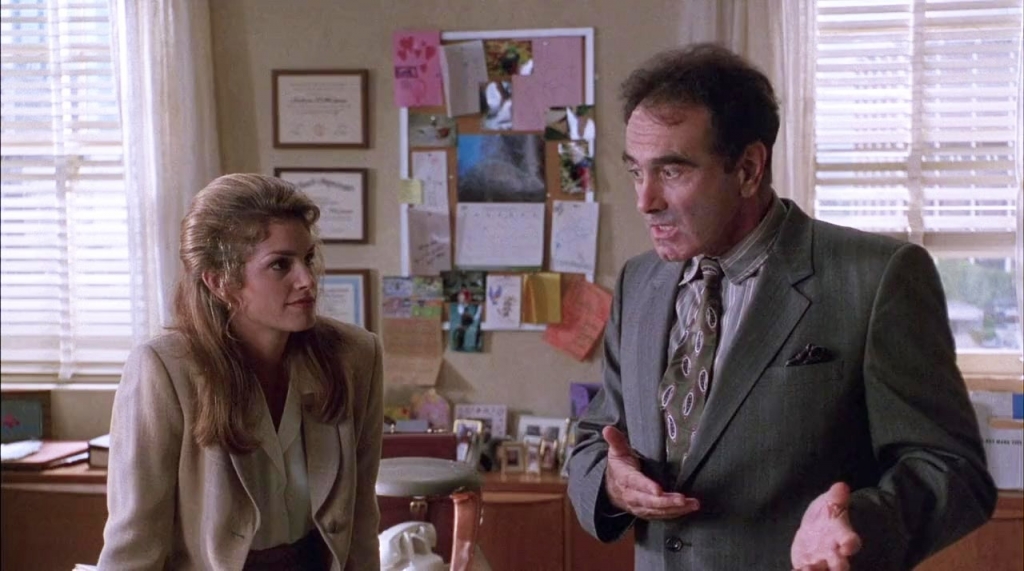
She does it with Kirkpatrick upon meeting him in his office after being shot at. When he gives her grief for being a lawyer, she quickly turns the tables on him being a cop, leaving him searching for what to say.
When another lawyer tries to bully her to settle out of court, her understanding of the law outsmarts her opponent, forcing him to give in to the demands of her client.
Crawford’s legs may be a little long for the skirts she wears to the office, but it’s a damn shame how many film critics were so mesmerized by them that they missed the fact that Kate McQuean is a smart and admirable female character.
Much like Crawford herself, McQuean is a smooth combination of beauty, grit, and brains.
“It’s just a woman driving the car, shoot her,” yells one of the villains during a car chase. And once again Crawford’s McQuean, “just a woman,” proves the naysayer wrong, out-driving him with explosive results.
Still, none of this changes the fact that Fair Game was a massive misfire.
A few reviews pointed out the absurd fun of the picture and even it being the right film for Crawford to make. Mick LaSalle at the San Francisco Chronicle called it an “exuberantly loony film,” but also stressed that it was “an enjoyable movie.”
Hal Hinson at the Washington Post wrote, “[Crawford] wisely chose a role that would emphasize her glorious animal presence over her skills as a performer. Actually, it’s a lot like modeling—but with more explosives.”
But the damage was done, and Crawford didn’t relish the idea of being an actress.
“When you do another action picture…,” Bobby Wygant asked during a 1995 interview. “If,” Crawford playfully interrupted.
It’s noteworthy that Crawford seemed a little tense during the interview talking about the film. But as soon as Wygant steers the interview to her modeling career, Crawford visibly lowers her shoulders and relaxes, back in her comfort zone, her true passion.
On Larry King Live the following year, Crawford eloquently said that if she did another movie it would have to offer “some other experience.” Crawford then spoke of the importance of needing a relationship with the director, saying how doing an action movie is hard because of all the time-consuming technical aspects and planning involved.
This gives the impression that director Andrew Sipes had his hands full with all of the action elements, leaving the first-time director unable to give the proper attention needed to a first-time actress trying to give a good performance.
“I should have been more focused on who the director was than what kind of trailer I got because… after the third week [Sipes] stopped speaking to anyone on the set,” said Crawford.
Getting stuck with a rookie director certainly didn’t do Crawford any favors. Not only did the inexperience of Sipes make for a less than favorable filming experience on Fair Game, but it also brought a lot of criticism to its megastar.
“It was difficult because here I am, I’m not an actress, and literally [I] would get zero direction,” explained Crawford. “It wasn’t the worst movie ever made, I’ve certainly seen worse, but it just didn’t do well and people weren’t that impressed with my performance.”
It was easy for the unknown Sipes to remain invisible when it came to criticism; he was simply a non-factor when Cindy Crawford was the one on the movie posters.
All of the criticism and failure of the picture still didn’t leave Crawford regretting her decision to star in Fair Game.
“I was like, ‘Wow, I’m only 28, if I stop taking chances now, if I stop doing new things now because I’m afraid to fail, what am I gonna do for the next 20 years?’”
So Crawford took on a big-budget Hollywood movie. And while she admits it probably wasn’t the best decision, she learned a very valuable lesson about herself.
“The great thing about doing that movie was I learned I wasn’t an actress, and I didn’t particularly like it.”
She may not have cared for acting but Crawford did have a newfound respect for what actors do. Between getting up early and filming all night for four weeks in a row, she said the job is hard work.
Ultimately, in the trajectory of her career, Crawford referred to doing Fair Game as “a gift.”
“I was able to put the attempt at being an actress to rest.”
(Crawford did do a short film afterward that gave her time to focus on her lines and was more about the performance.)
Crawford wasn’t the only one who learned more about herself and what she did (and didn’t) want while making Fair Game.
William Baldwin concluded that action movies weren’t really the kind of pictures he cared to make.
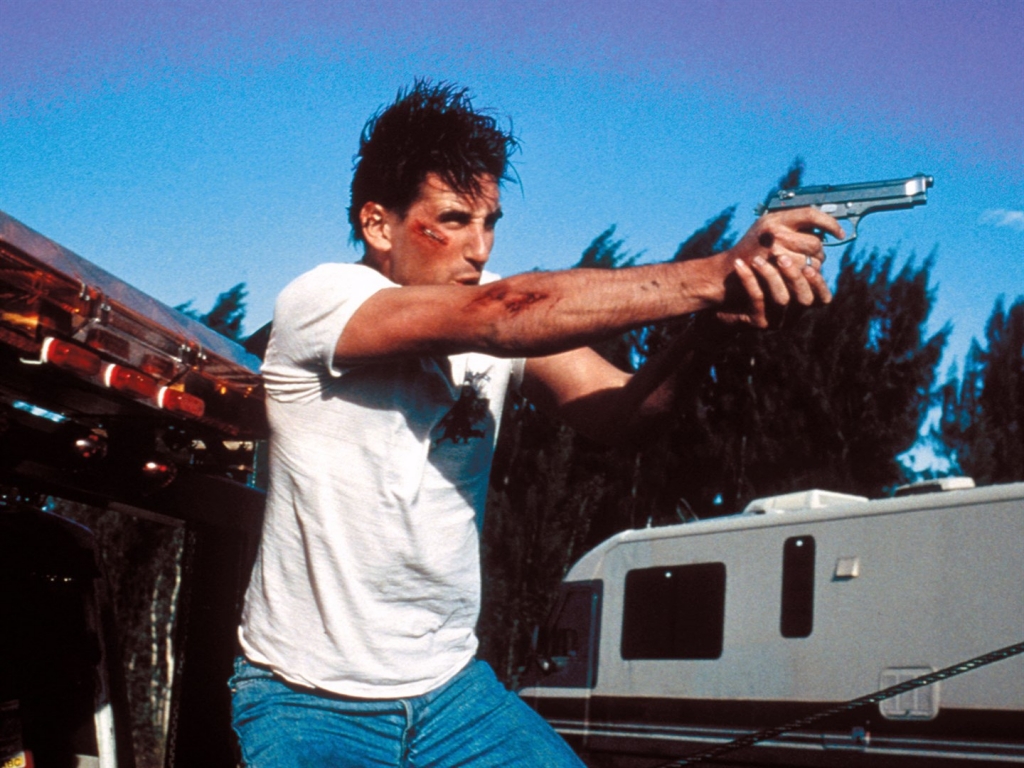
“I don’t want to be an action franchise sort of an actor,” said Baldwin upon the release of Fair Game.
The actor said he wouldn’t rule out doing another action movie, but he added that he “responds more to performance-oriented pieces.”
Baldwin did, however, talk to his fellow actor brothers about proposing the four Baldwins all play the villains in the next Pierce Brosnan James Bond movie after GoldenEye (1995). The idea never materialized but it would have been enormously entertaining if it had (for extra fun, Alec Baldwin’s wife, Kim Basinger, could have been the Bond Girl).
After Fair Game, Baldwin’s career took a noticeable hit, but the actor has since maintained a steady and respectable career with over 80 acting credits in movies and various popular TV shows.
While audiences can always see Baldwin in something new, it’s Crawford that was the biggest missed opportunity as a result of the failure of Fair Game.
Despite having mixed feelings about being an actress, she appears to be having fun on set in behind-the-scenes footage. Crawford is shown constantly joking and making funny faces, seemingly an overall amusing and positive presence. These glimpses show the magic of Cindy Crawford that made her so successful in her life and profession.
She’s very funny in the behind-the-scenes footage. Makes one wonder if she should have gone in the direction fellow supermodel Kathy Ireland took when starring in the 1993 comedy National Lampoon’s Loaded Weapon 1.
(In a lighthearted scene in Fair Game, a nerdy employee receives a kiss from Crawford for helping her at a computer store, and the screen magic and irresistible charm that Crawford was capable of is briefly glimpsed.)
It’s too bad Crawford was thrown into such a silly film adapted by a first-time screenwriter with a director in over his head (it remains Sipes’ only feature film).
Fair Game was to be the vehicle to launch Crawford into Hollywood, but producer Joel Silver should have known better than to choose an absurd action movie with an amateur script that plays like a straight to video shoot-em-up that would satisfy a niche audience at best.
Crawford deserved better. She deserved a director who could offer the proper attention to a first-time actress.
Fair Game isn’t a terrible movie; it’s fun if you check your brain at the door. But the intentions behind it were misguided. It put too much pressure on Crawford and didn’t adequately prepare her to be in a big-budget movie that would obviously garner a lot of attention.
“I have to still put myself in positions where I could fail,” said Crawford at the time of Fair Game‘s release.
Even at the top of the modeling profession, Crawford realized that opportunities were still out there.
Born in DeKalb, Illinois, and noticed as a teenager when a picture of her working in a prairie cornfield appeared in a local newspaper, an interviewer from HollywoodChicago.com summed up Crawford by saying, “From DeKalb to Malibu, God Bless America.” Crawford laughed and replied, “The American Dream right there.”
And the American Dream allows for the chance to fail, an important aspect of the idea that Crawford embraced.




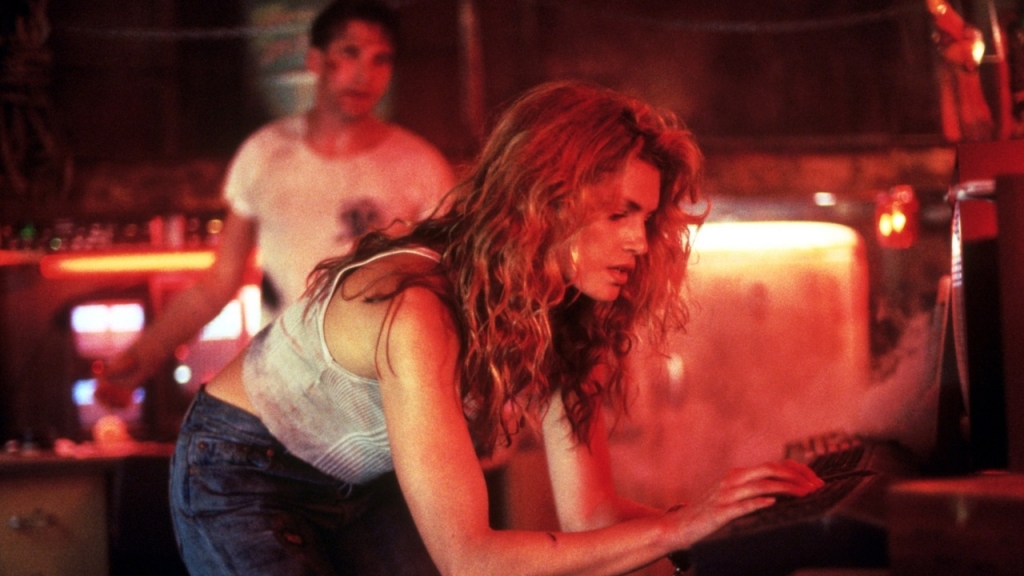

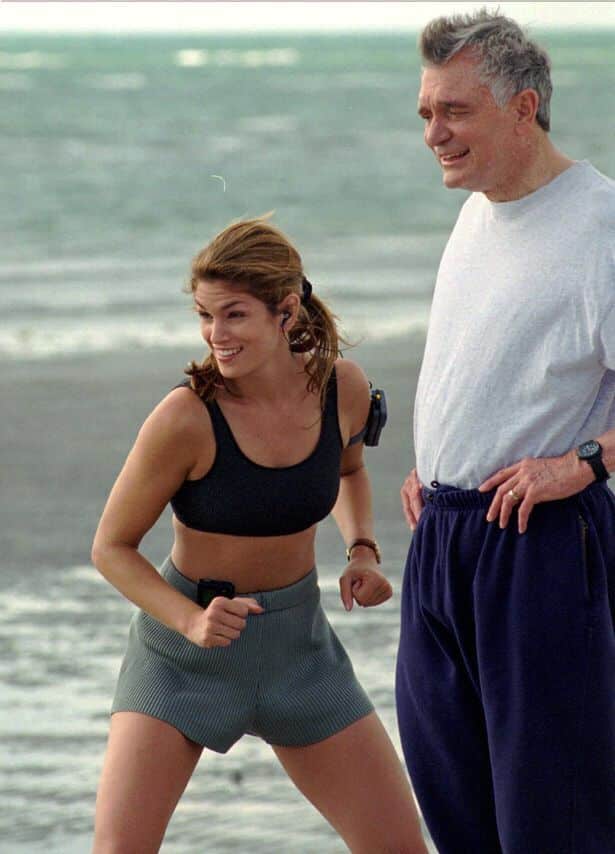
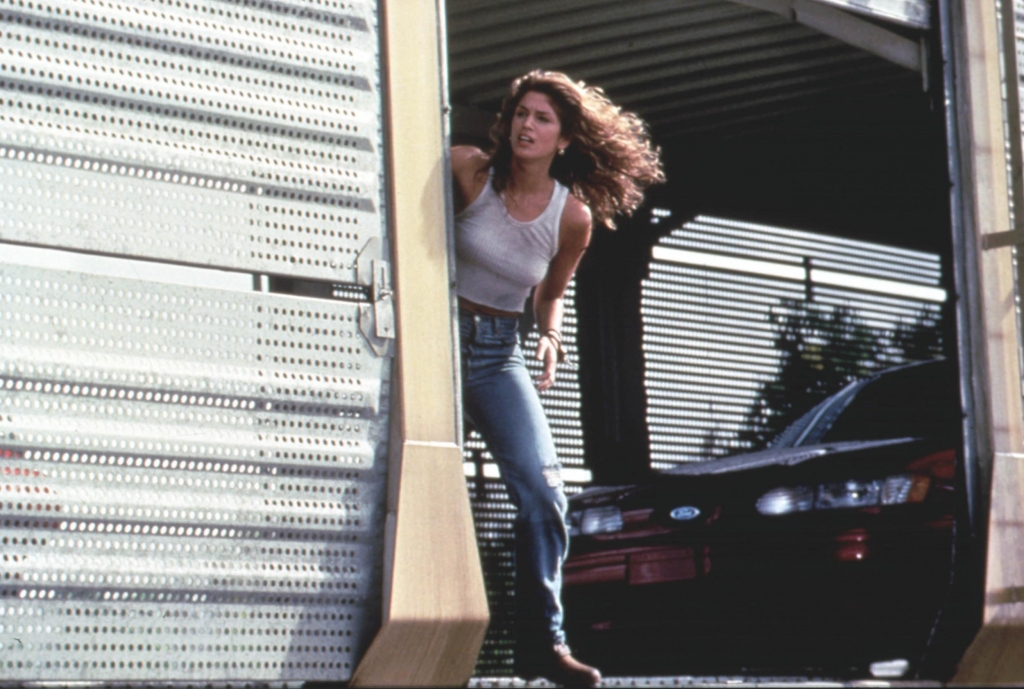
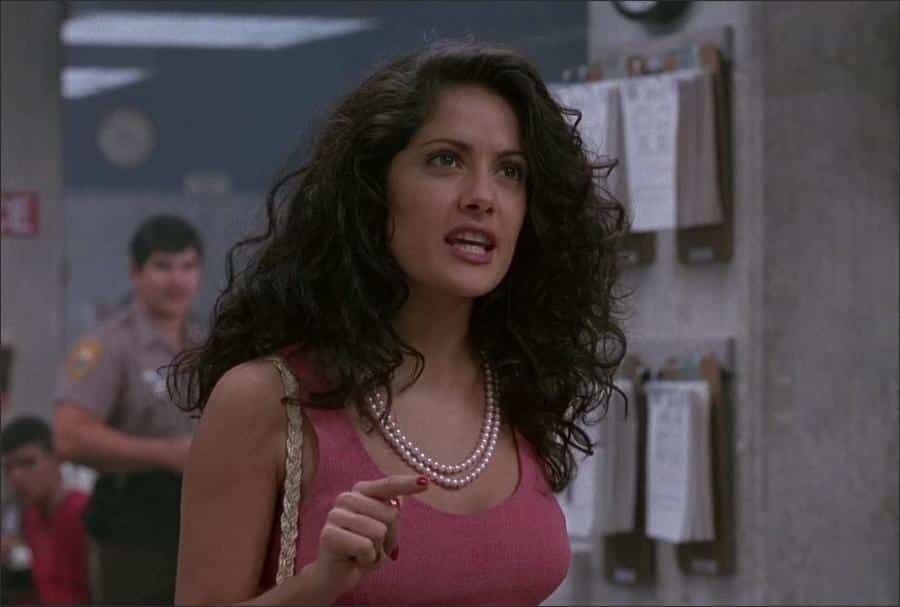
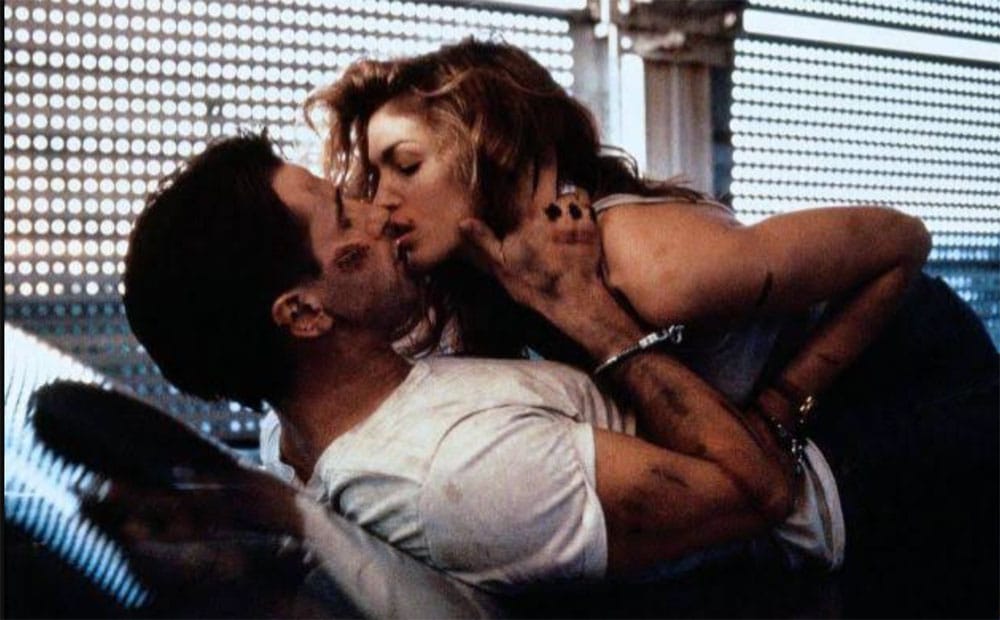
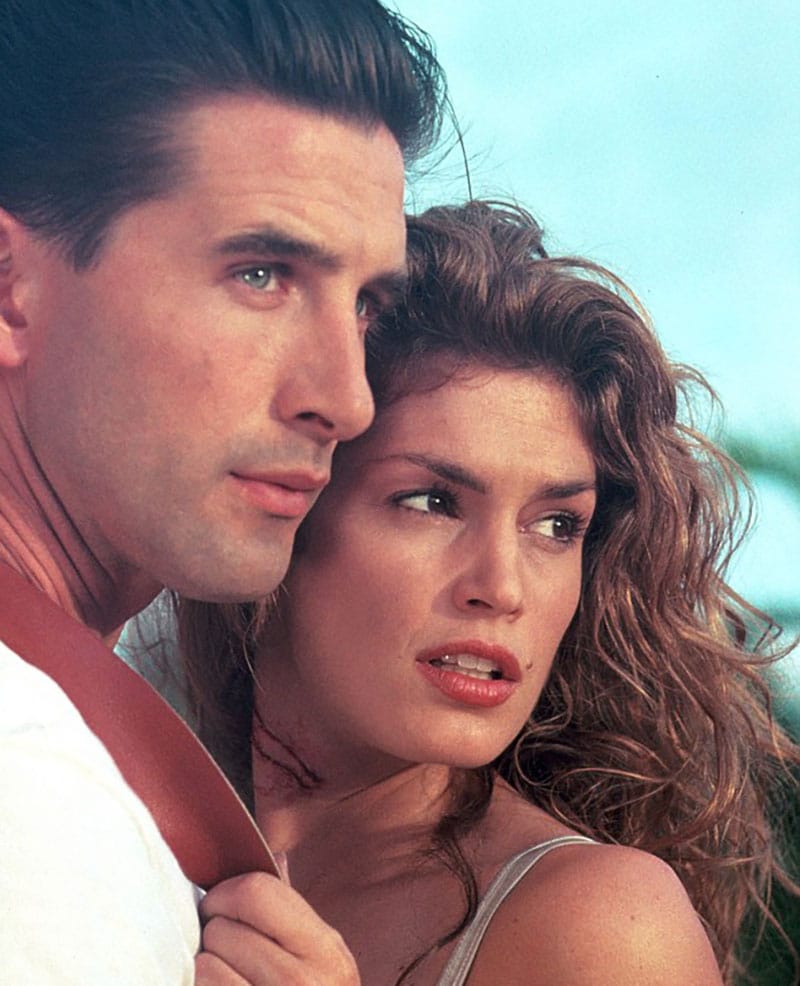
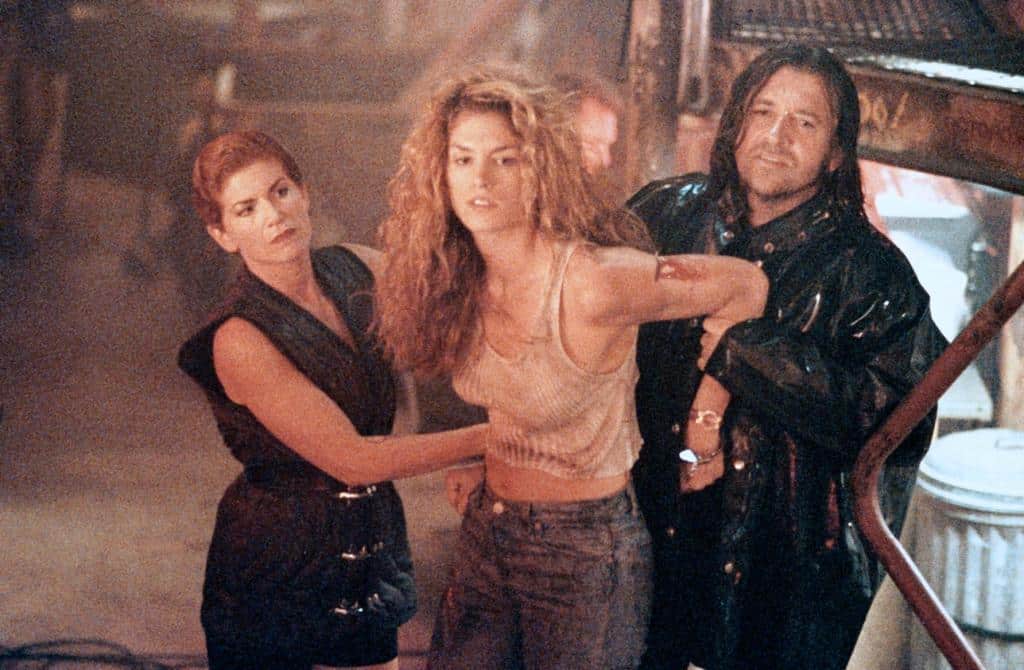
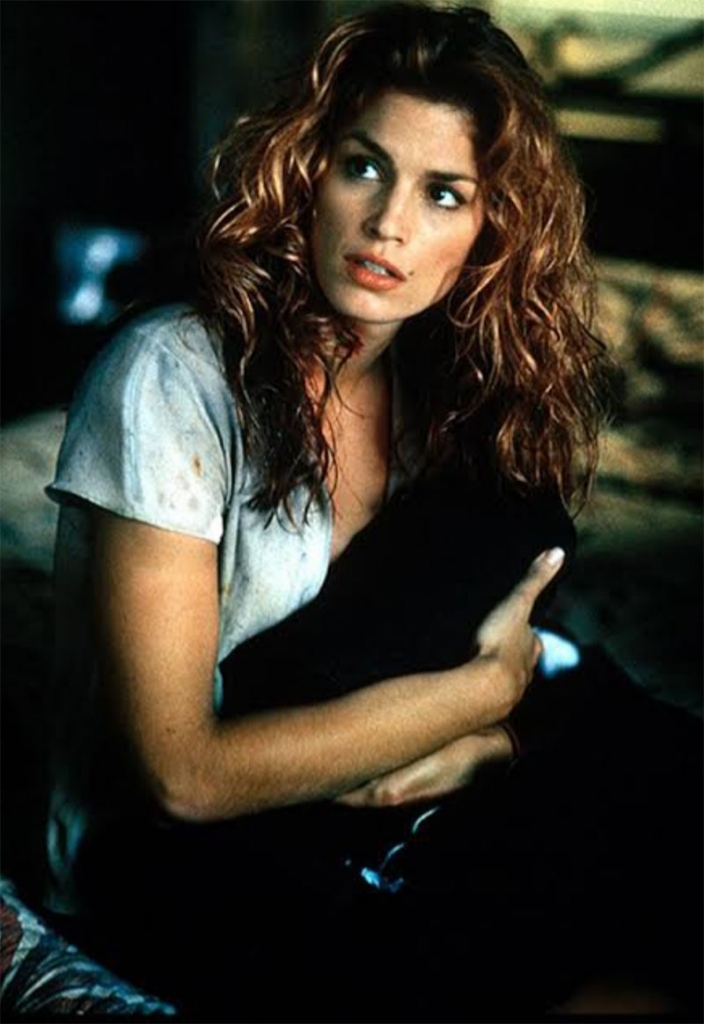
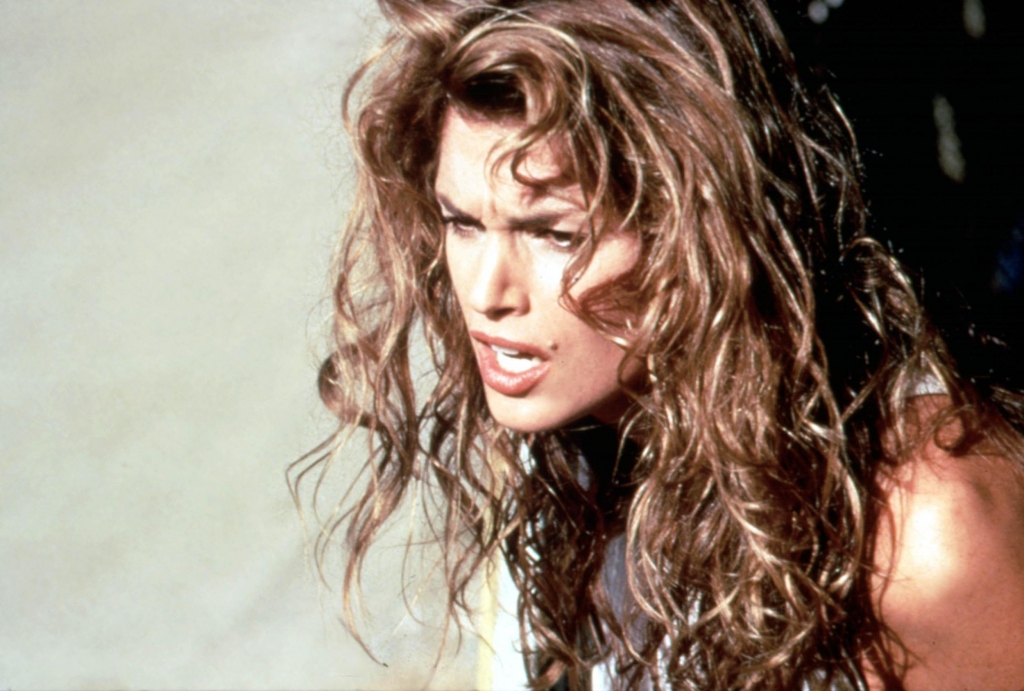
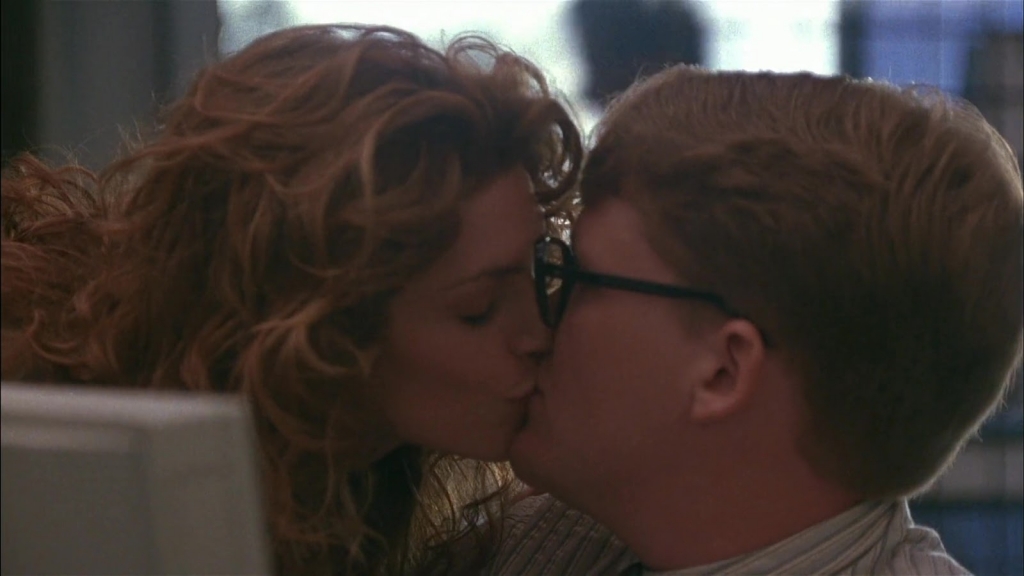
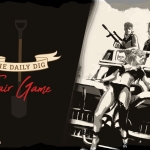





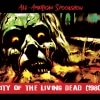




Follow Us!